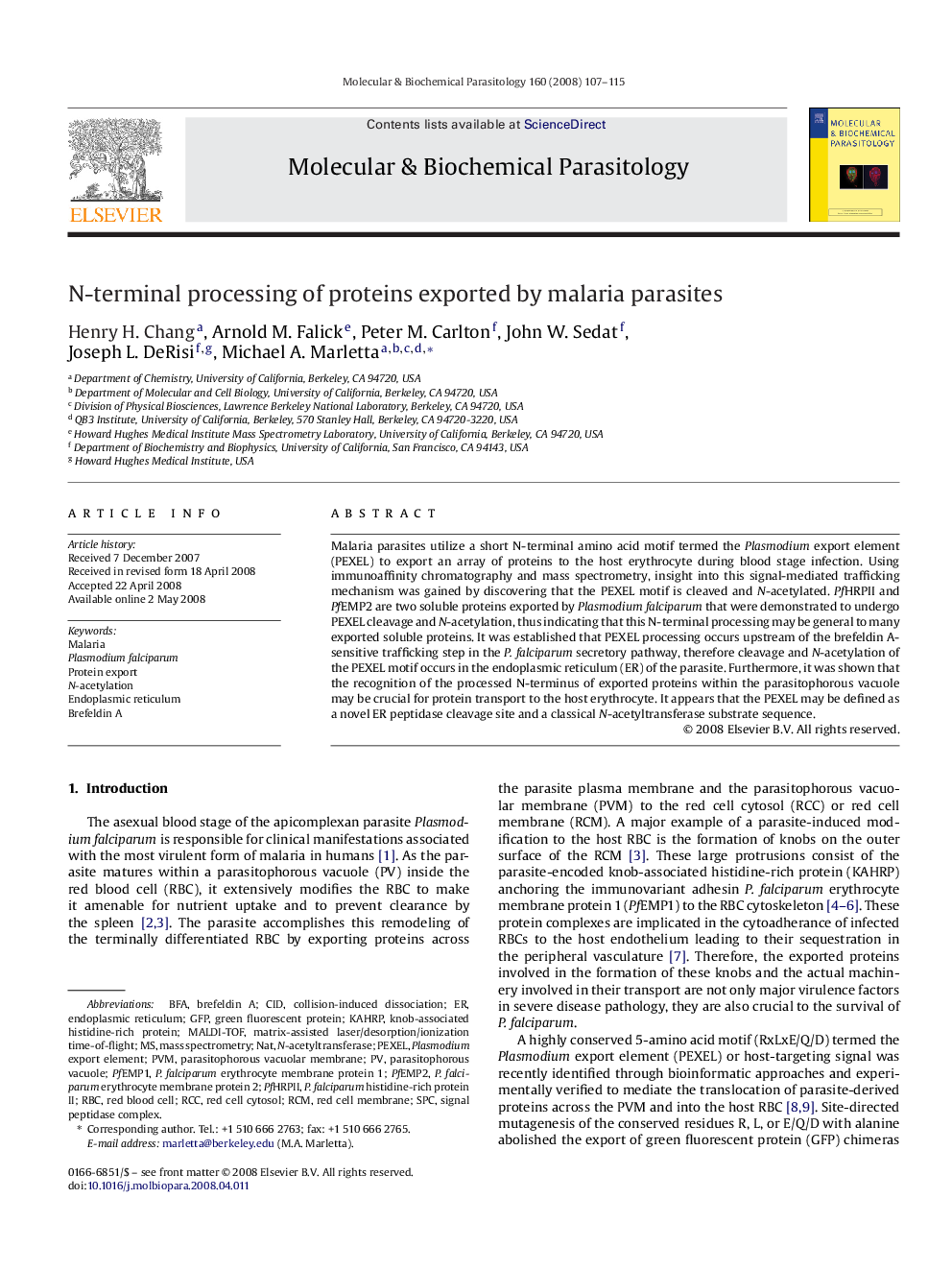| Article ID | Journal | Published Year | Pages | File Type |
|---|---|---|---|---|
| 5916001 | Molecular and Biochemical Parasitology | 2008 | 9 Pages |
Malaria parasites utilize a short N-terminal amino acid motif termed the Plasmodium export element (PEXEL) to export an array of proteins to the host erythrocyte during blood stage infection. Using immunoaffinity chromatography and mass spectrometry, insight into this signal-mediated trafficking mechanism was gained by discovering that the PEXEL motif is cleaved and N-acetylated. PfHRPII and PfEMP2 are two soluble proteins exported by Plasmodium falciparum that were demonstrated to undergo PEXEL cleavage and N-acetylation, thus indicating that this N-terminal processing may be general to many exported soluble proteins. It was established that PEXEL processing occurs upstream of the brefeldin A-sensitive trafficking step in the P. falciparum secretory pathway, therefore cleavage and N-acetylation of the PEXEL motif occurs in the endoplasmic reticulum (ER) of the parasite. Furthermore, it was shown that the recognition of the processed N-terminus of exported proteins within the parasitophorous vacuole may be crucial for protein transport to the host erythrocyte. It appears that the PEXEL may be defined as a novel ER peptidase cleavage site and a classical N-acetyltransferase substrate sequence.
